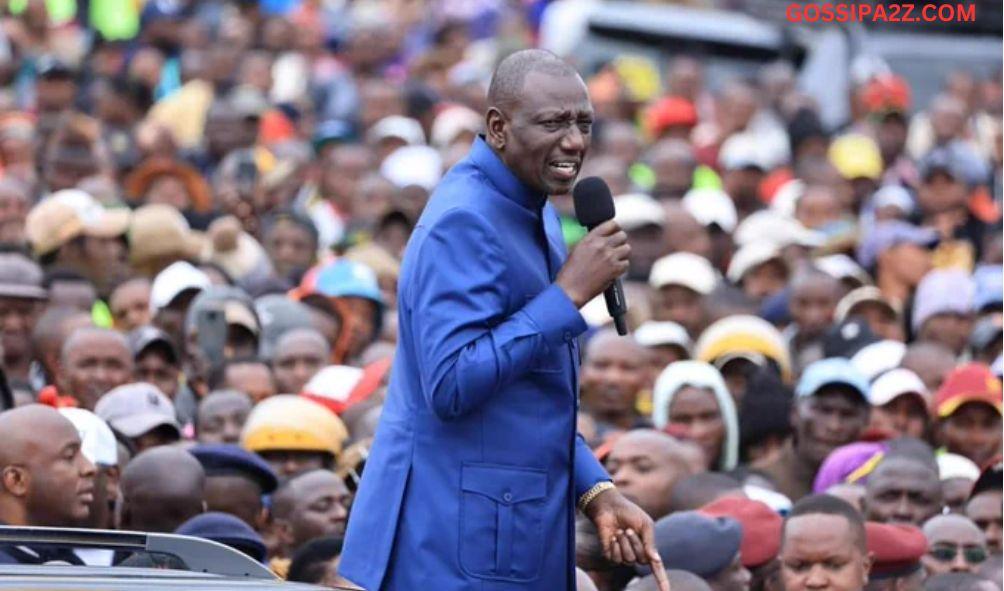Ruto Promised The Dollar Drop To Ksh.115 ‘In A Month Or So’, Five Months Later, What Happened?
On April 11, President William Ruto exuded confidence the US dollar exchange rate would drop in what he described as a phenomenal way to below Ksh.120.
At the time, the dollar was trading at Ksh.134 and Dr Ruto gave Kenyans a timeline of “one month or so.”
“In the next month or so you will see the dollar exchange rate coming down in a very phenomenal way. In fact, in my estimation, in the next couple of months, the exchange rate will come below Ksh.120, maybe Ksh.115,” Ruto said then.
He said that the drop would be aided by the move to purchase oil products using the Kenyan shilling as opposed to the dollar, which was setting the country back Ksh.66.8 billion ($500 million) every month.
“Today as a country we can buy fuel in Kenyan shillings, something that many people never thought would be possible. From April, all our fuel marketers will be able to buy our fuel products in Kenya shillings and it will reduce pressure on our dollars,” said Ruto.
But five months later, the dollar is even more expensive, trading at Ksh.148, while fuel prices are at an all-time high.
Two weeks ago, the Energy and Petroleum Regulatory Authority (EPRA) revised fuel prices upwards by Ksh.16.96 for super petrol and diesel by Ksh.21.32, while kerosene climbed the highest by Ksh.33.13 per liter.
This pushed the price of super petrol in Nairobi to Ksh.211.64, diesel to Ksh.200.99, and kerosene to Ksh.202.61 per liter.
Trade Cabinet Secretary Moses Kuria shortly after told Kenyans to brace for even higher prices at the pump in the coming months, saying fuel prices will continue to rise by at least Ksh.10 every month until February next year.
ALSO READ:
UDA Senator Clarifies 106M Payout to Ruto-Raila Talk Team
New Lawsuit To Challenge Ruto’s Excessive Tax Appetite In Progress
Alcoblow To Make a Comeback on Kenyan Roads- NTSA
“Global Crude Prices are on an upward trajectory. For planning purposes expect pump prices to go up by Ksh 10 every month till February,” Kuria posted on X, formerly Twitter.
In March, the government entered into an oil importation deal with Saudi Aramco, the world’s biggest oil company, that would see the state import petroleum products under a six-month credit and possibly lead to lower fuel prices.
Petroleum imports account for up to 30 percent of Kenya’s annual import bill. Under the deal, Kenya hoped to relieve the dollar pressure by delaying the payments for petroleum products.
But appearing before the National Assembly’s Departmental Committee on Energy after EPRA revised fuel prices recently, Energy Cabinet Secretary Davis Chirchir said the higher fuel prices expected in the coming months are due to global effects presently affecting the sector and are out of the government’s control.
He said the Organization of the Petroleum Exporting Countries (OPEC) has cut down its global oil production by about 3.6 million barrels daily, thereby affecting the availability and pricing of the commodity.
He also cited the Russia-Ukraine war as another contributor to a spike in fuel costs, adding that President William Ruto’s removal of the fuel subsidies put in place by the previous government will see the prices keep skyrocketing.
CS Chirchir linked the decision to an irreversible pact between Kenya and the International Monetary Fund (IMF).
Ruto Promised The Dollar Drop To Ksh.115 ‘In A Month Or So’, Five Months Later, What Happened?
